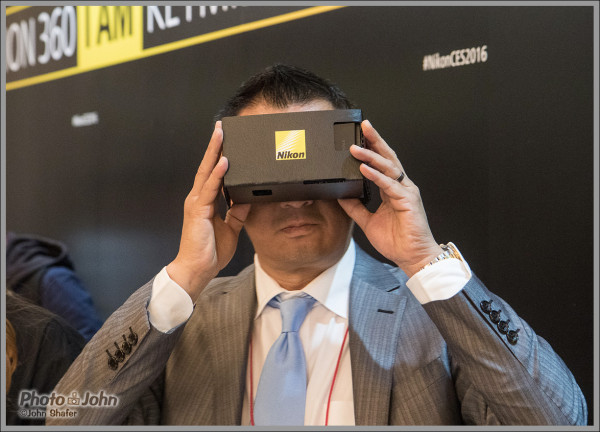Posted by Photo-John on January 5, 2016
In a surprise announcement at CES in Las Vegas today, Nikon revealed they are getting into the POV camera business. Their first offering is the Nikon KeyMission 360, a rugged action camera with two lenses that captures 360-degree 4k UHD video.
Professional outdoor adventure photographer Corey Rich showed the audience a short video (below) he made with the KeyMission 360. The video was also available for virtual reality viewing in a hands-on session after the presentation. It featured kayakers, mountain bikers and climbers in action. Corey called the KeyMission 360 a “game-changer” because it gives the viewer the choice to watch the main action, or turn around to see what’s going on behind the camera.
This was my first experience with 360-degree video and it really is a different experience. I’m honestly not quite sure how I’d use it. Obvious practical applications are tours, event coverage and technical demonstrations. But for traditional video makers, it may offer more challenges than benefits.

Member of the press at CES watching a virtual reality video made with Nikon’s new KeyMission 360 POV camera.
Nikon says there will be a whole line of POV / action cameras and accessories. The KeyMission 360 is just the start. So if a 360-degree virtual reality camera seems like overkill, there should be more traditional Nikon POV camera options, as well. No price has been announced yet and the 360-degree capture feature makes it’s hard to make an educated guess about the price. However, the GoPro and Sony 4k POV cameras list for $500 and I’m guessing the KeyMission 360 will be priced to compete with those cameras. Stay tuned for more information.
2 Responses to Nikon Enters POV Camera Space With the KeyMission 360